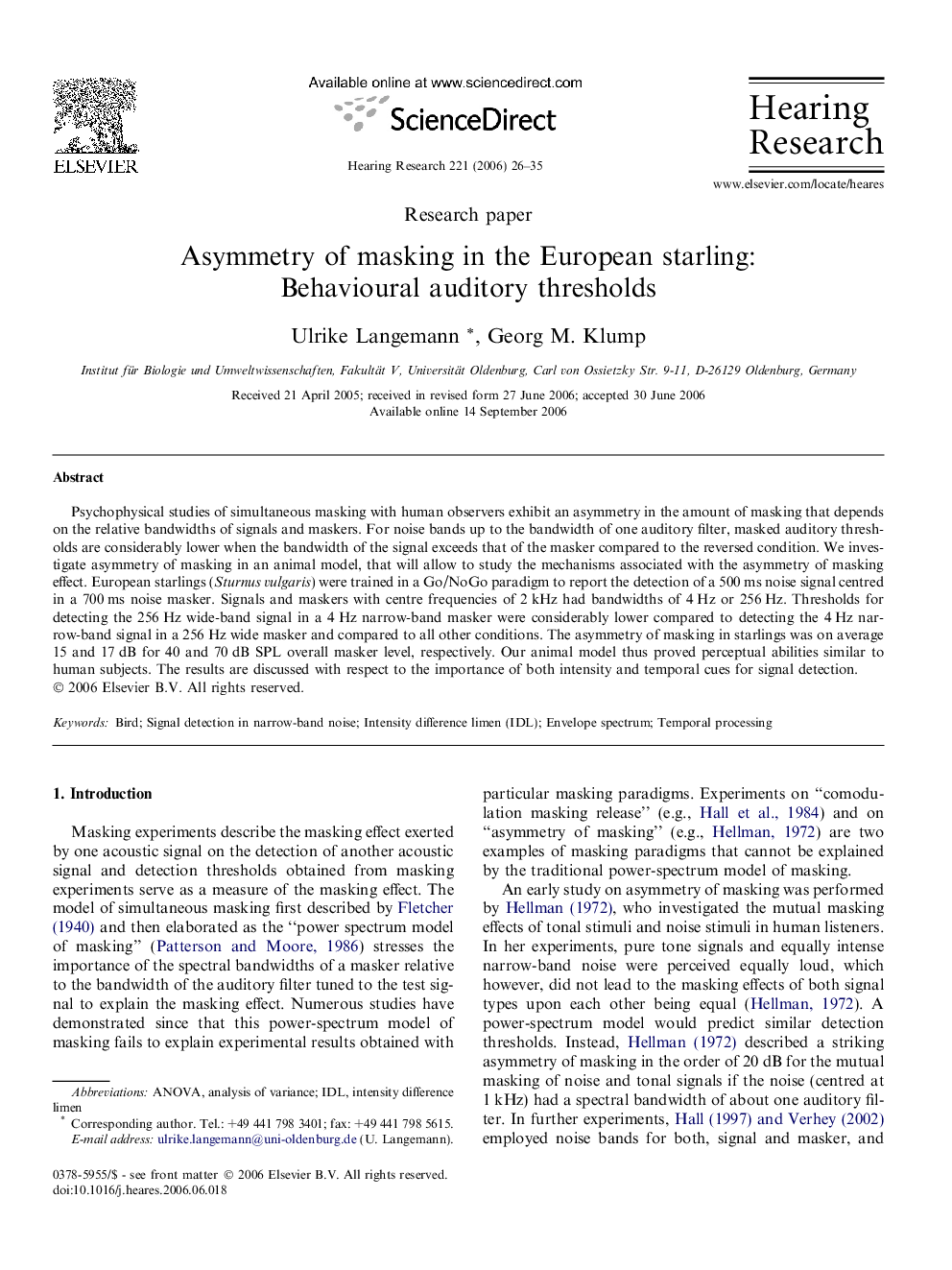| Article ID | Journal | Published Year | Pages | File Type |
|---|---|---|---|---|
| 4356297 | Hearing Research | 2006 | 10 Pages |
Psychophysical studies of simultaneous masking with human observers exhibit an asymmetry in the amount of masking that depends on the relative bandwidths of signals and maskers. For noise bands up to the bandwidth of one auditory filter, masked auditory thresholds are considerably lower when the bandwidth of the signal exceeds that of the masker compared to the reversed condition. We investigate asymmetry of masking in an animal model, that will allow to study the mechanisms associated with the asymmetry of masking effect. European starlings (Sturnus vulgaris) were trained in a Go/NoGo paradigm to report the detection of a 500 ms noise signal centred in a 700 ms noise masker. Signals and maskers with centre frequencies of 2 kHz had bandwidths of 4 Hz or 256 Hz. Thresholds for detecting the 256 Hz wide-band signal in a 4 Hz narrow-band masker were considerably lower compared to detecting the 4 Hz narrow-band signal in a 256 Hz wide masker and compared to all other conditions. The asymmetry of masking in starlings was on average 15 and 17 dB for 40 and 70 dB SPL overall masker level, respectively. Our animal model thus proved perceptual abilities similar to human subjects. The results are discussed with respect to the importance of both intensity and temporal cues for signal detection.
